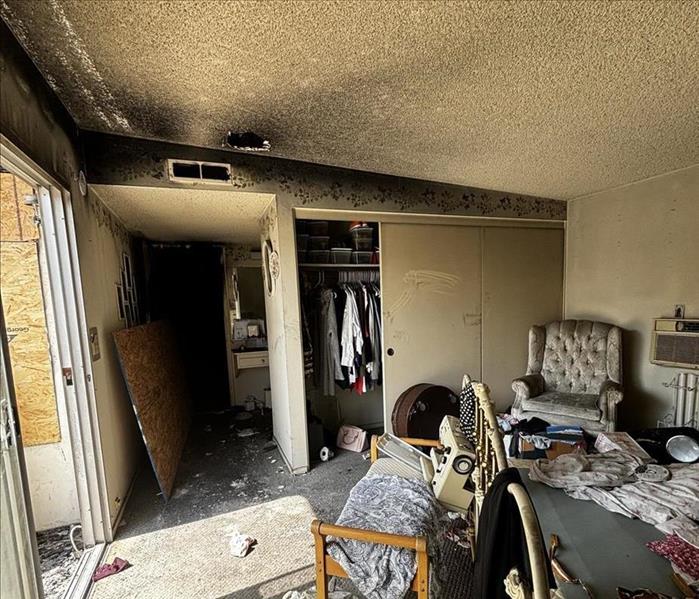Understanding the Differences Between Smoke and Fire Damage
8/14/2024 (Permalink)
 Both types of damage require specific cleaning and restoration techniques to ensure your home is safe and livable.
Both types of damage require specific cleaning and restoration techniques to ensure your home is safe and livable.
Experiencing a fire in your home is a traumatic event. Beyond the immediate danger, fires leave behind significant damage that can be challenging to address. Understanding the difference between smoke and fire damage is crucial for effective cleanup and restoration. In this blog, we’ll explore the distinctions between these two types of damage and why it’s essential to address both.
Fire Damage: The Immediate Impact
Structural Damage
Fire damage refers to the destruction caused directly by the flames. This includes burnt and charred structures, such as walls, ceilings, and floors. The intensity of the fire determines the extent of this damage, which can sometimes lead to partial or total structural failure.
Heat Damage
Heat from a fire can cause severe damage beyond what the flames touch. High temperatures can warp metal, crack glass, and cause paint to blister and peel. This type of damage is often overlooked but can compromise the integrity of various materials in your home.
Water Damage
Ironically, water damage is often a significant component of fire damage. Firefighting efforts typically involve large amounts of water to extinguish the flames, leading to soaked carpets, walls, and furniture. This moisture can promote mold growth if not addressed promptly.
Smoke Damage: The Lingering Effects
Odor
One of the most persistent issues after a fire is the smell of smoke. Smoke particles are incredibly small and can embed themselves in fabrics, furniture, and other porous materials. This can cause a lingering odor that is difficult to eliminate without professional cleaning.
Residue and Soot
Smoke leaves behind a greasy, black residue known as soot. Soot can cover surfaces throughout your home, from walls and ceilings to furniture and personal items.
Discoloration
Smoke can cause discoloration on walls, ceilings, and other surfaces. This staining can range from light yellowing to severe black streaks, depending on the intensity and duration of the fire. Smoke damage can also tarnish metal and cause etching on glass.
Why Address Both Types of Damage
Property Value
Failure to address smoke and fire damage can significantly reduce the value of your property. Lingering odors, visible soot, and structural issues can deter potential buyers and decrease the overall market value of your home.
Preventing Further Damage
Smoke and soot are acidic and can cause further damage over time. They can corrode metals, stain surfaces permanently, and degrade materials. Immediate and thorough cleaning is necessary to prevent additional deterioration.
Professional Restoration Services in Laguna Beach, CA
Professional restoration services are often necessary due to the complexity of fire and smoke damage. Here’s why you should consider hiring experts:
Expertise and Equipment
Professional restoration companies, like SERVPRO®, have the expertise and specialized equipment needed to clean and restore your home effectively. This includes industrial-grade cleaners, air scrubbers, and deodorizers.
Comprehensive Cleaning
Professionals can provide comprehensive cleaning that goes beyond surface-level damage. This includes cleaning air ducts, treating upholstery, and addressing hidden damage that might not be immediately visible.
Insurance Assistance
Dealing with insurance claims can be overwhelming after a fire. Professional restoration companies often assist with the documentation and communication needed to ensure your claim is processed smoothly and that you receive the compensation you deserve.
Moving Forward
Understanding the difference between smoke and fire damage is crucial for effective recovery after a fire. Both types of damage require specific cleaning and restoration techniques to ensure your home is safe and livable. If you’ve experienced a fire in Laguna Beach, CA, contact SERVPRO of Laguna Beach/Dana Point for expert help in restoring your home. Our team is dedicated to making your property look and feel like new again, ensuring both your safety and peace of mind.





 24/7 Emergency Service
24/7 Emergency Service